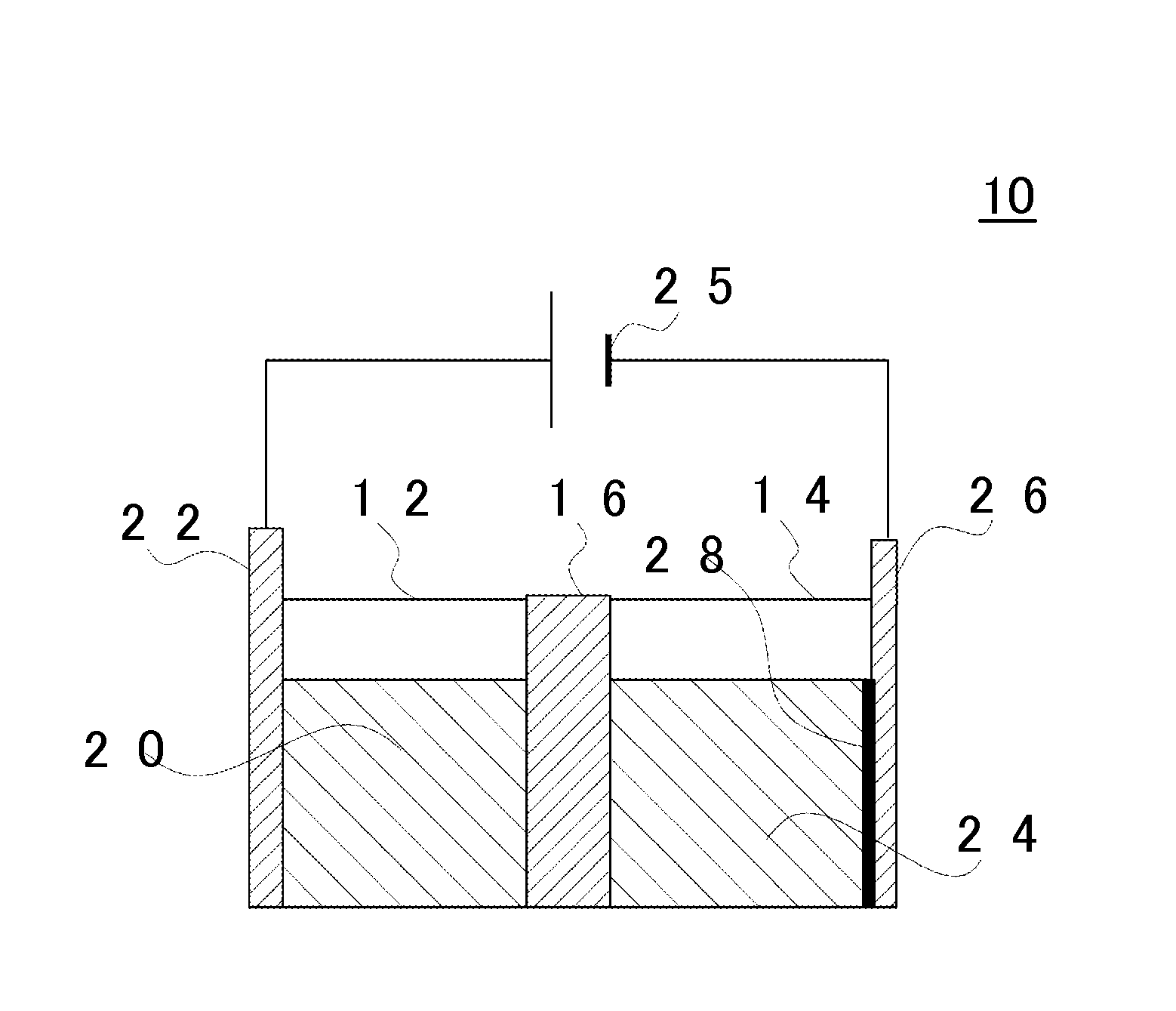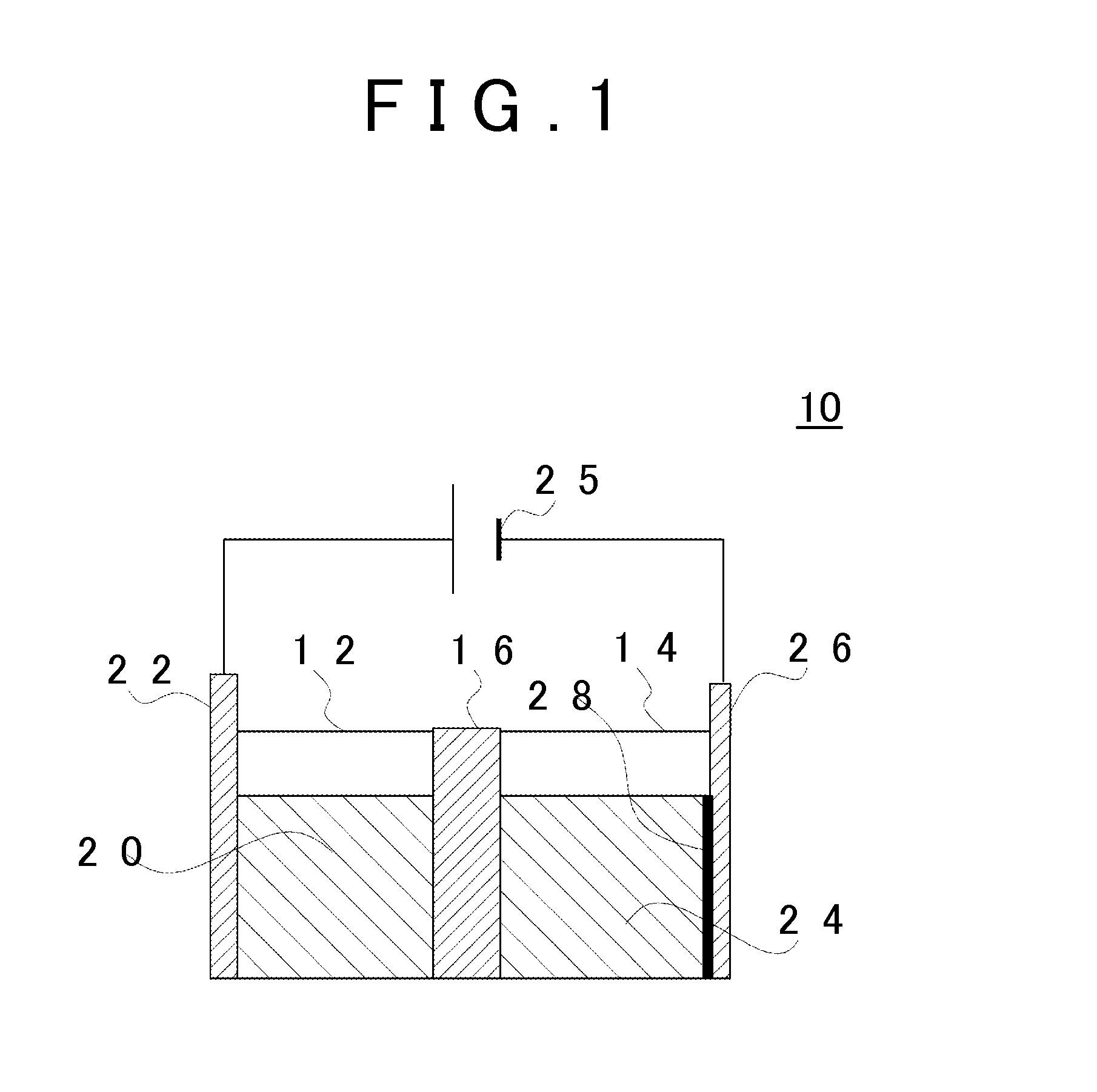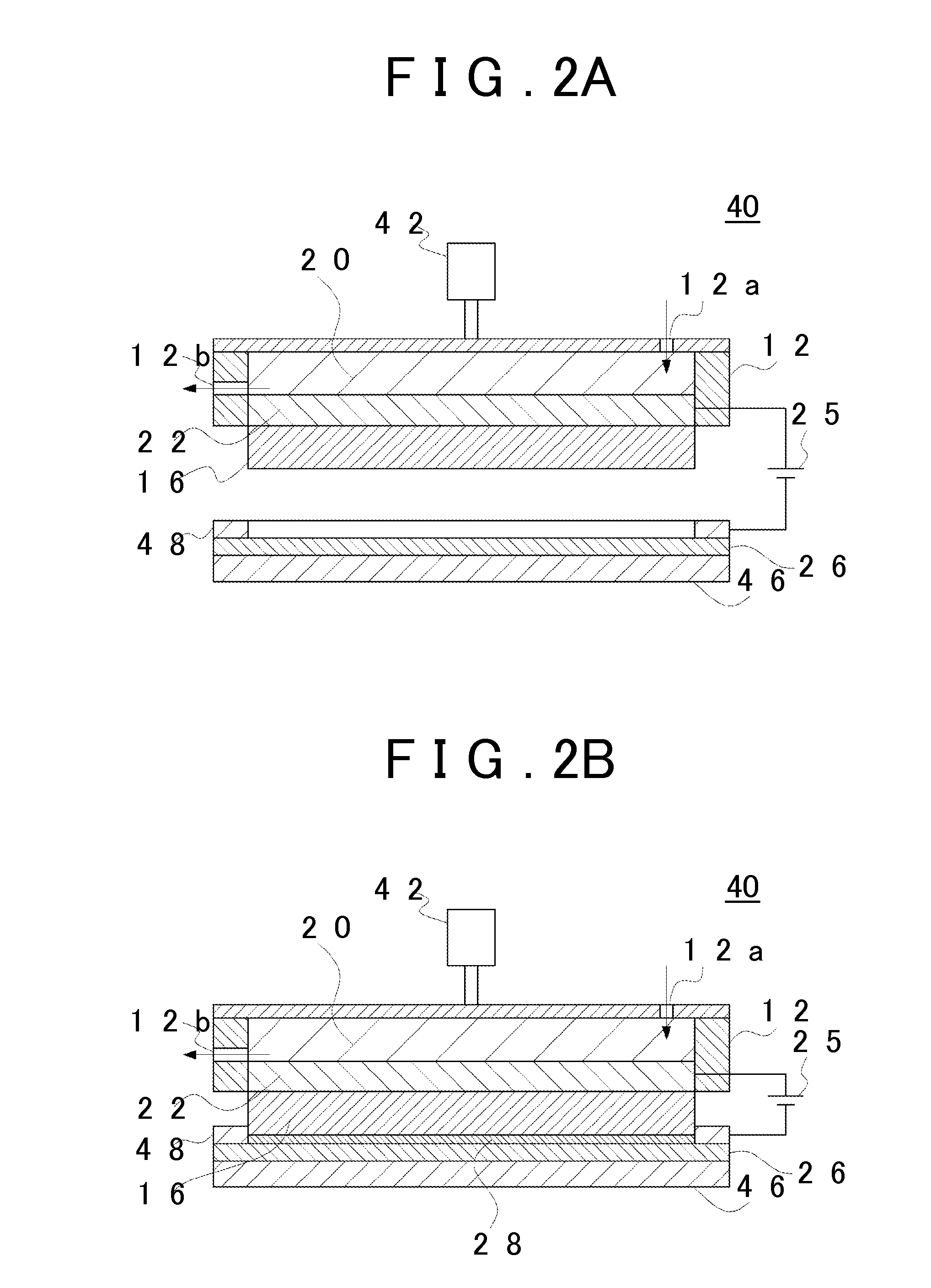Electroplating cell, and metal coating and method of forming the same
a technology of electroplating cell and metal coating, which is applied in the direction of electrolysis components, electrolysis apparatus and processes, transportation and packaging, etc., can solve the problems of high cost of plating solution management and waste liquid treatment, high cost of film forming speed, and need for vacuum units, so as to achieve excellent metal coating, reduce electrodeposition efficiency, and reduce the effect of electrodeposition efficiency
- Summary
- Abstract
- Description
- Claims
- Application Information
AI Technical Summary
Benefits of technology
Problems solved by technology
Method used
Image
Examples
examples 1 and 2
1.1. Examples 1 and 2
[0187]The metal coating 28 was prepared using the electroplating cell 10 illustrated in FIG. 1. As the base material of the separator 16, a perfluorosulfonic acid-based cation exchange membrane (thickness: 183 μm, size: 30 mm×30 mm) was used. As the solution for fixing the additive to the separator 16, 100 mL of an aqueous solution in which hexadecyltrimethylammonium bromide or tetramethylammonium hydroxide is dissolved in ultrapure water was prepared. The additive concentration in the solution was controlled to be 20% to 100% with respect to the ion exchange capacity of the cation exchange membrane. For ion exchange of the membrane, a dipping treatment was performed using a covered PFA container at 80° C. for 2 hours. In addition, after the ion exchange, the separator 16 was washed with warm water at 80° C. for 2 hours and was held in ultrapure water.
[0188]As the anode 22 and the cathode 26 (sample electrode), a Pt plate having a size of 2 cm×2 cm and a thickne...
PUM
| Property | Measurement | Unit |
|---|---|---|
| Fraction | aaaaa | aaaaa |
| Fraction | aaaaa | aaaaa |
| Fraction | aaaaa | aaaaa |
Abstract
Description
Claims
Application Information
 Login to View More
Login to View More - R&D
- Intellectual Property
- Life Sciences
- Materials
- Tech Scout
- Unparalleled Data Quality
- Higher Quality Content
- 60% Fewer Hallucinations
Browse by: Latest US Patents, China's latest patents, Technical Efficacy Thesaurus, Application Domain, Technology Topic, Popular Technical Reports.
© 2025 PatSnap. All rights reserved.Legal|Privacy policy|Modern Slavery Act Transparency Statement|Sitemap|About US| Contact US: help@patsnap.com



